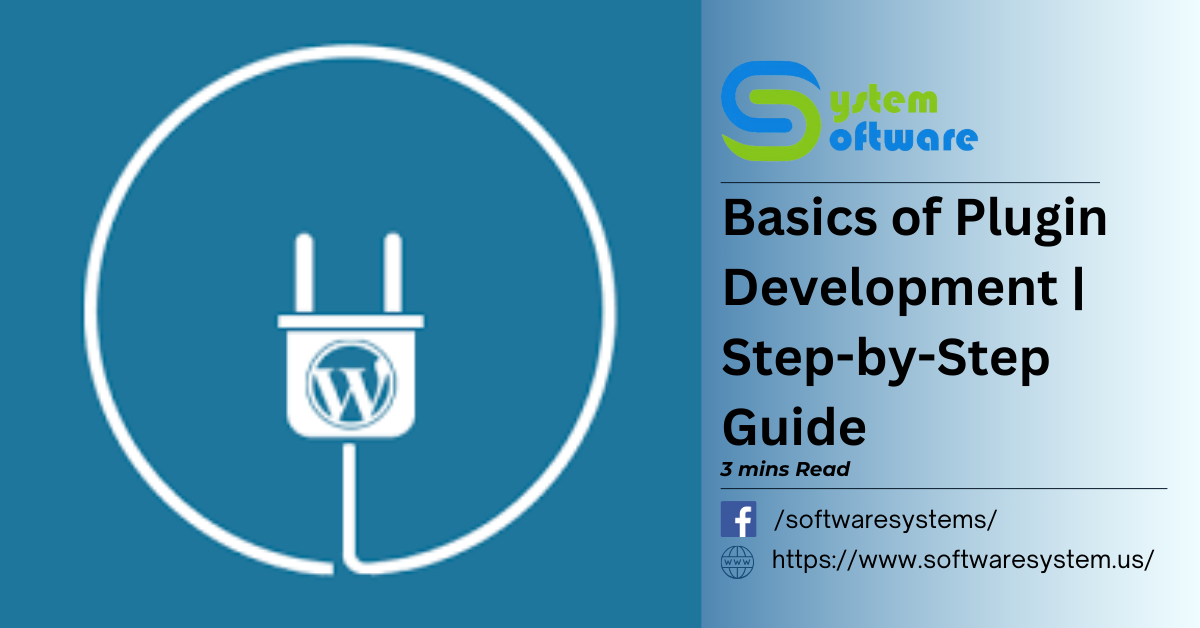Creating a successful plugin requires more than just coding skills it demands a clear understanding of your problem, a solid development strategy, and attention to detail at every stage. Whether you’re new to plugin development or looking to refine your approach, this guide covers the Basics of Plugin Development the essential steps, and plugin development tips to build like a pro.
Table of Contents | Basics of Plugin Development

1. Define the Purpose and Scope
The first step in plugin development is pinpointing the problem you want to solve. A clear purpose keeps your development process focused and efficient.
- Key Questions to Consider:
- What specific issue will my plugin address?
- Who is the target audience, and how will they use it?
For example, if your goal is to enhance e-commerce features, concentrate on functionalities like cart customization, one-click payments, or improved user navigation.
Pro Tip: Simplicity wins. A plugin that performs one function exceptionally well is more likely to succeed than an overcomplicated tool.
2. Set Up Your Development Environment
The foundation of effective plugin development lies in having the right tools and setup. Without a proper environment, your workflow can quickly become chaotic.
- Essentials for WordPress Plugin Development:
- Local Environment: Use tools like XAMPP, MAMP, or Local by Flywheel to create a staging site.
- Code Editor: Opt for a reliable editor like Visual Studio Code or Sublime Text.
- Technical Skills: Be proficient in PHP, JavaScript, HTML, and CSS—core technologies for WordPress development.
Extra Tip: Install version control tools like Git to track changes and collaborate more effectively.
3. Write Clean, Structured Code
Maintain a well-organized codebase to ensure your plugin remains readable and easy to maintain.
- Best Practices for Plugin Code Structure:
Use clear, descriptive names for functions and variables. Example:
PHP
function custom_cart_enhancement() {
// Add custom code here
}
- Organize files into logical directories, such as /includes, /assets, and /templates.
- Add meaningful comments to explain complex logic.
Pro Tip: Always write code as if another developer will maintain it in the future—it might even be you!
4. Follow WordPress Coding Standards
WordPress has specific coding standards that promote consistency and high-quality development. Adhering to these standards ensures your plugin integrates seamlessly with the platform.
- Quick Tips for WordPress Coding Standards:
- Use proper indentation and spacing.
- Write descriptive comments.
- Avoid hardcoding values; rely on constants or variables instead.
- Escape all user input to prevent security vulnerabilities.
Extra Resource: Use tools like PHPCS with the WordPress Coding Standards ruleset to automate compliance.
5. Prioritize Testing Across Environments
Testing isn’t optional it’s critical. A plugin that fails on a live site can lead to disastrous results for its users.
- How to Test Effectively:
- Test your plugin on different PHP versions and WordPress releases.
- Check functionality across popular themes and plugins to ensure compatibility.
- Use debugging tools like Query Monitor or Debug Bar to identify and fix issues.
Pro Tip: Run load tests to evaluate your plugin’s performance under high-traffic conditions.
6. Optimize for Performance
Efficient code is the hallmark of a professional plugin. Sluggish performance can frustrate users and impact SEO rankings.
- Performance Optimization Checklist:
- Database Optimization: Minimize queries by implementing caching.
- Asset Management: Load scripts and styles only when necessary using conditional logic.
- Code Efficiency: Write lean, reusable code to reduce execution time.
Extra Tip: Use tools like GTmetrix or Lighthouse to assess the performance impact of your plugin.
7. Ensure Compatibility
Your plugin must play well with others. Incompatibility with popular themes or plugins can lead to frustrated users and bad reviews.
- Steps to Maximize Compatibility:
- Test on multiple themes and hosting environments.
- Use WordPress hooks and filters to interact with other plugins gracefully.
- Avoid overriding core WordPress functions or styles.
Pro Tip: Use tools like WP Sandbox to simulate various environments for testing.
8. Create Robust Documentation and Support
Great plugins are backed by great documentation. Users should never feel lost when installing or using your tool.
- What to Include in Documentation:
- Installation instructions.
- Detailed usage guidelines.
- Troubleshooting tips for common issues.
Extra Tip: Create video tutorials or screenshots to supplement your written documentation.
See Software Plugin Development Services at Software System.
Bonus Plugin Tips for Pro Developers
- Stay Updated: Keep up with WordPress updates and industry trends to ensure your plugin remains relevant.
- Secure Your Plugin: Implement nonces and sanitize all inputs to protect against common vulnerabilities like XSS and SQL injection.
- Monetization Options: Consider premium features or subscription models for revenue generation.
Conclusion
Mastering the basics of plugin development isn’t just about writing code—it’s about solving real-world problems with efficiency and precision. By defining your plugin’s purpose, adhering to best practices, and prioritizing performance and compatibility, you can create tools that users love and trust.
Keep your development process user-focused, and remember: a great plugin not only works well but also provides value that keeps users coming back for more.

